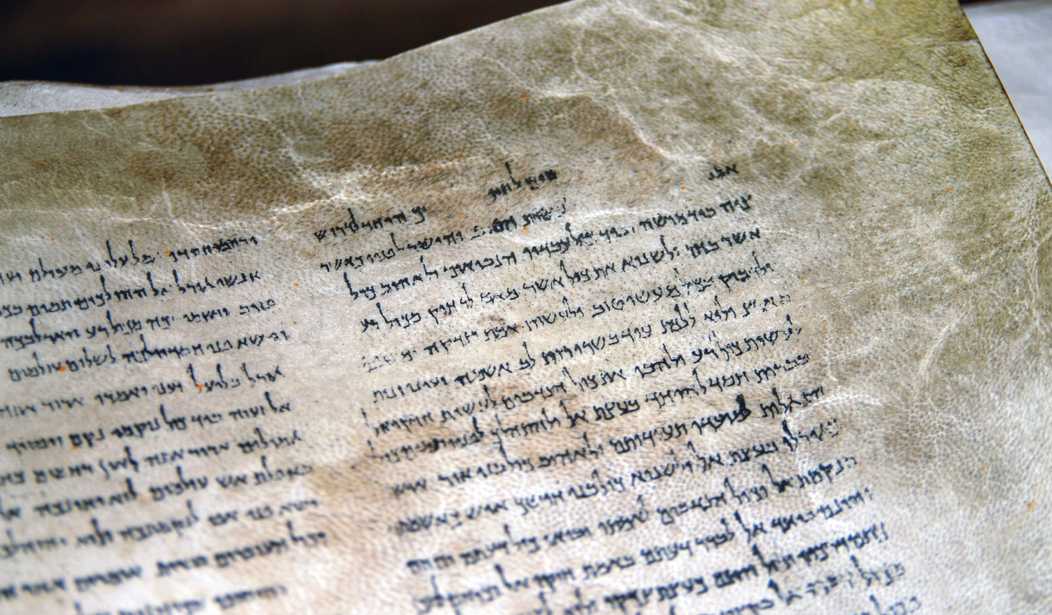A new study revealed that literacy in the ancient kingdom of Judah was more widespread than previously thought, undermining skeptics’ arguments for the unreliability of many Old Testament books. Israeli mathematicians and archaeologists teamed up to investigate evidence that suggests key Bible texts were composed earlier than many scholars think.
A Tel Aviv University team used handwriting analysis technology like that used by intelligence agencies and banks to analyze signatures, the Associated Press reported. This analysis determined that a group of ancient Hebrew inscriptions, dated back to 600 B.C., were written by six different authors, suggesting widespread literacy in the ancient kingdom.
“We’re dealing with really low-level soldiers in a remote place who can write,” co-author Israel Finkelstein told Live Science. “So there must have been some sort of educational system in Judah at that time.”
Scholars have long believed that the Bible was written at the time of the events catalogued in its pages. Skeptics have doubted these claims, however, arguing that the scribes and literate officials mentioned in the texts are a literary fiction. This group of scholars has claimed that the Old Testament was written after the kingdom of Judah fell to the Babylonian king Nebuchadnezzar in 586 B.C. Some have even argued that the Old Testament works were compiled even later, under Persian or Greek rule.
But this new evidence points toward an earlier date, Finkelstein argued. His study found a new way to address the question. Decades ago, archaeologists uncovered archaic ink writings on ostraca (pottery shards) from a frontier fort called Arad, a garrison located far away from the Judean kingdom’s capitol, Jerusalem. Finkelstein said he wondered if these inscriptions, which have been dated to 600 B.C., and were written over the course of a few months, could reveal the level of literacy in the kingdom.
Finkelstein teamed up with Arie Shaus, a mathematics and archeology doctoral candidate at Tel Aviv University, and Shira Faigenbaum-Golovin, an applied mathematics doctoral candidate at that university. These two led a team using computer programs to scan digital images of the text, fill in missing lines of text, and analyze each stroke of ink. Using handwriting technology, the computer algorithms determined that the 18 inscriptions were written by at least six different people.
Those six authors represented a wide range in military rank. Malkiyahu, commander of the fort, authored some, as did the lowly deputy quartermaster. More impressive, these messages were written with proper spelling and syntax.
“This is really quite amazing,” Finkelstein told LiveScience. He emphasized the remoteness of the fort, and marveled that at least six people there could write — and write properly. Since other border forts have similar ostraca, it seems reasonable to conclude that writing in the late period of the kingdom of Judah was widespread, at least within the army.
It is important to note that these inscriptions are not themselves biblical texts, but rather accounts of troop movements and expenses for provisions. Their existence does have important implications for the writing of the Bible, however, as it indicates that people throughout the military chain of command were able to read and write. The tone of immediacy in the inscriptions also suggests that they were not written by professional scribes, making it that much more impressive that they had proper grammar and syntax.
Finkelstein argued that this evidence suggests a substantial fraction of the estimated 100,000 people in the kingdom could read, perhaps several hundreds of people. This would imply an astounding level of literacy for ancient times.
Furthermore, for this many people to be able to read and write, and to do so with proper syntax, implies that there must have been some kind of educational system in ancient Judah, the author said. If so, that means there would have been enough literate people to compile large portions of the Old Testament.
Next Page: What does this mean for the Old Testament? Which books would have been written that early?
Finkelstein suggested that the book of Deuteronomy, parts of Genesis, and the books of Joshua to 2 Kings could have been compiled in the late Judean period — which would lend a high degree of reliability to these Old Testament texts.
The historical books between Joshua and Kings are of particular interest in this list, as many historians have argued against the existence of King David, claiming that he was a mythical king invented later. If these books could have been written closer in time to the actual events they narrate, historians may have to concede that the Old Testament books are more reliable than they have assumed.
After 586 B.C., when the kingdom of Babylon took Jerusalem and destroyed the Jewish temple, Israel’s educated people were killed or taken into exile. During this period in the region, there is not so much as a pottery shard, seal, or stamp with a single piece of writing on it for more than 200 years, according to archaeological evidence, Finkelstein said. This suggests that the Old Testament books he mentioned were likely not compiled during this period, but before the destruction of the temple.
Christopher Rollston, a Near East scholar at George Washington University in Washington, D.C., largely agreed with Finkelstein. He said that there is no doubt that many elites in the kingdom of Judah could read and write around 600 B.C. “In fact, I have argued in print that the literacy of elites (scribes, high governmental and religious officials) is already present by circa 800” B.C., the scholar told Live Science.
Ernst Axel Knauf, a theology scholar at Bern University in Switzerland, disagreed with these conclusions, however. “I do not share the authors’ opinion that literacy among the elite declined after the seventh century.”
“I don’t need algorithms” to prove that literacy was widespread in ancient Judah, Shmuel Ahituv, an Israeli Bible scholar who did not participate in the study, told the AP. He argued that evidence in the texts themselves shows that they were written before the fall of Jerusalem.
This study adds even more weight to the reliability of the Bible, and should enable more historians to consider it a valuable primary or secondary source for events occurring at the time.









Join the conversation as a VIP Member